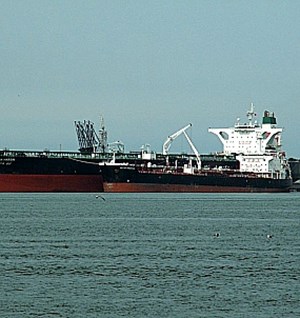(Bloomberg) – Oil plunged for the second straight day as U.S. President Donald Trump signaled he wants to keep oil flowing out of Iran after brokering a fragile ceasefire between Tehran and Israel.

West Texas Intermediate crude plunged by nearly 15% over two sessions to settle near $64 a barrel, while Brent was just above $67. Prices have slumped amid the significant deescalation of a conflict that has rocked the energy-rich Middle East. Trump said in a social media post that China can continue buying Iranian oil and that he hopes the country will also be purchasing “plenty” from the U.S.
Crude fell further as both sides made deescalatory remarks.
The move is a stark departure from an earlier U.S. strategy of squeezing Iranian energy exports to apply pressure at the negotiating table, a move many investors thought might be contingent on upholding the ceasefire or assurances on nuclear intentions, said Rebecca Babin, a senior energy trader at CIBC Private Wealth Group.
Crude has declined sharply this week — including a 7% rout on Monday — despite the arrival of a long-feared clash that saw America bomb Iran’s nuclear sites and the Islamic Republic retaliate against U.S. bases in Qatar. While prices spiked in the wake of Israel and America’s initial attacks, the conflict hasn’t had any significant impact on oil flows from the Persian Gulf, and exports from Iran have surged.
See also: Middle East oil flows continue through Strait of Hormuz despite conflict
Furthermore, the shale boom of the early 2000s has helped to greatly reduce U.S. reliance on Middle Eastern oil, blunting the impact of a conflict in the region on energy prices. The initial price surge has instead presented a major opportunity for domestic producers to lock in higher prices, with swap dealer positions in U.S. crude futures climbing to the most on record last week.
The latest price slump brings the market back to where it was before Israel attacked Iran on June 12. Traders are now refocusing on a looming surplus later in the year, with a supply surge from producers both inside and outside the OPEC+ alliance set to outpace growth in demand. The pullback also offers a fresh reminder that geopolitical disruptions to crude prices can ultimately be short-lived.
“The geopolitical risk premium built up since the first Israeli strike on Iran almost two weeks ago has entirely vanished,” said Tamas Varga, an analyst at brokerage PVM. “There are growing hopes that investors will be able to focus on economic policies instead of geopolitics.”
A sustained market retreat may alleviate fears about elevated inflation, fulfilling one of Trump’s key aims. Still, cheaper crude dents the economies of producer nations, particularly in the Middle East, and may refocus discussions around the financial health of major oil companies.
The Mideast crisis erupted about two weeks ago as Israel attacked Iran in a bid to eradicate its nuclear program, decimate its leadership and degrade its military, with Tehran firing missiles in reply. In a major escalation, Trump ordered a strike against the Islamic Republic’s nuclear sites, prompting Iran to launch a limited missile salvo against a U.S. airbase in Qatar.
OPEC+ supply
The OPEC+ alliance — which includes Iran — has been reactivating idled capacity at a rapid clip in a bid to recapture market share. The group is due to hold a video-conference July 6 to consider a further supply hike in August.
“In a week and a half, OPEC+ will agree to increase production by another 400,000 barrels a day,” said Robert Rennie, head of commodity and carbon research at Westpac Banking Corp. “As we move into the third quarter — and global production rises and demand wanes, driving inventory sharply higher — we will see prices probing the lower end of the previous $60-to-$65 range.”

